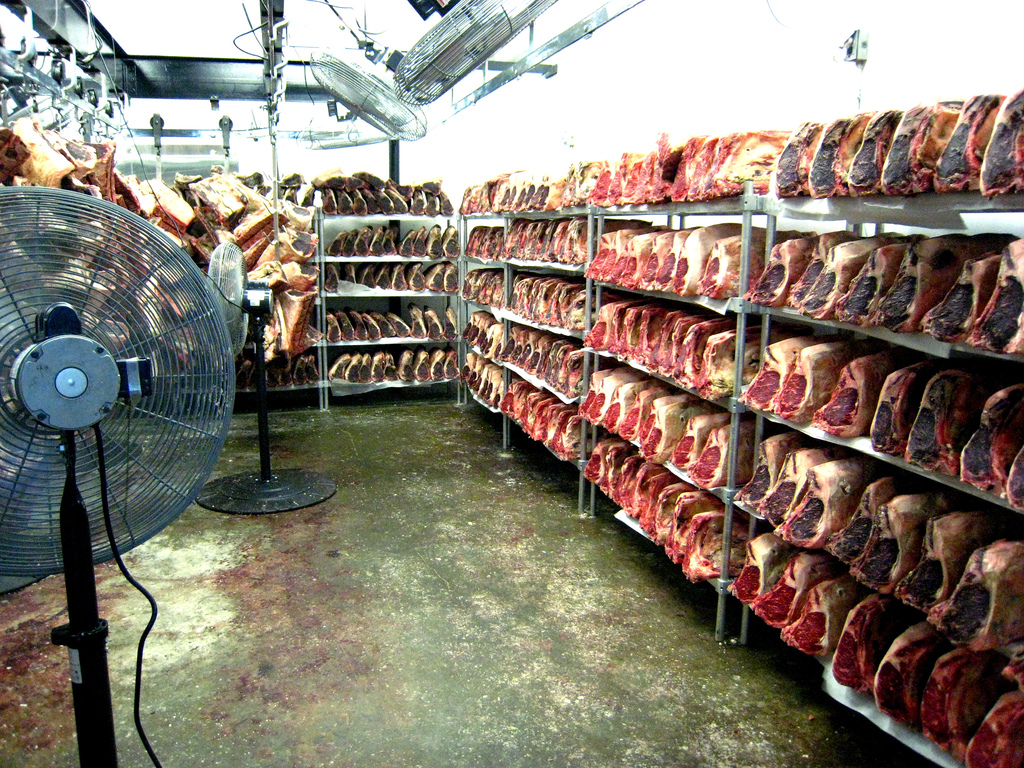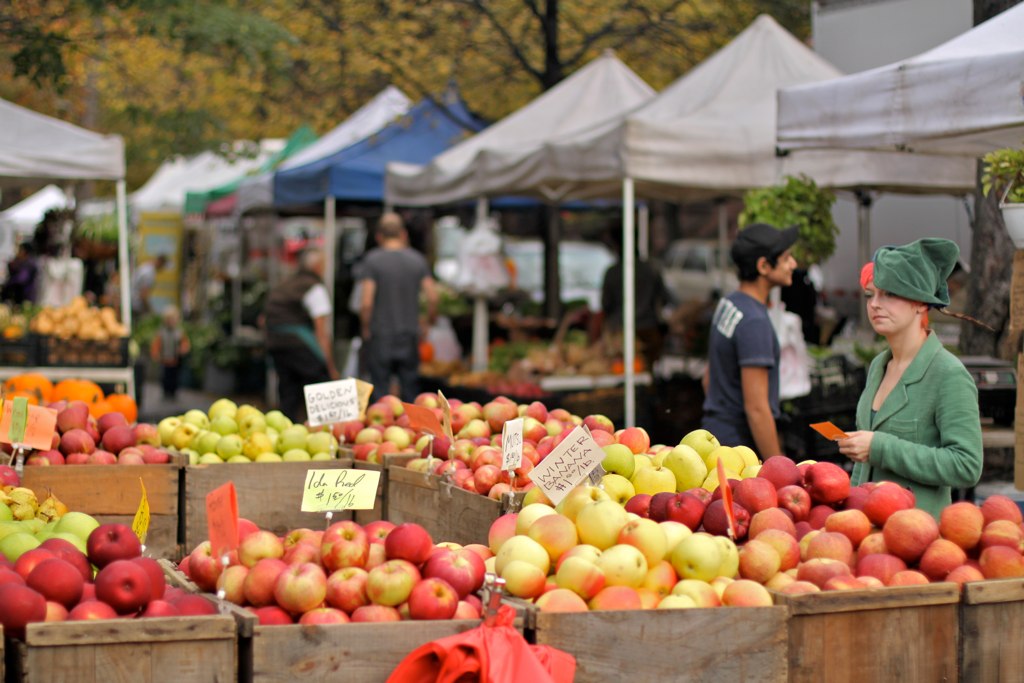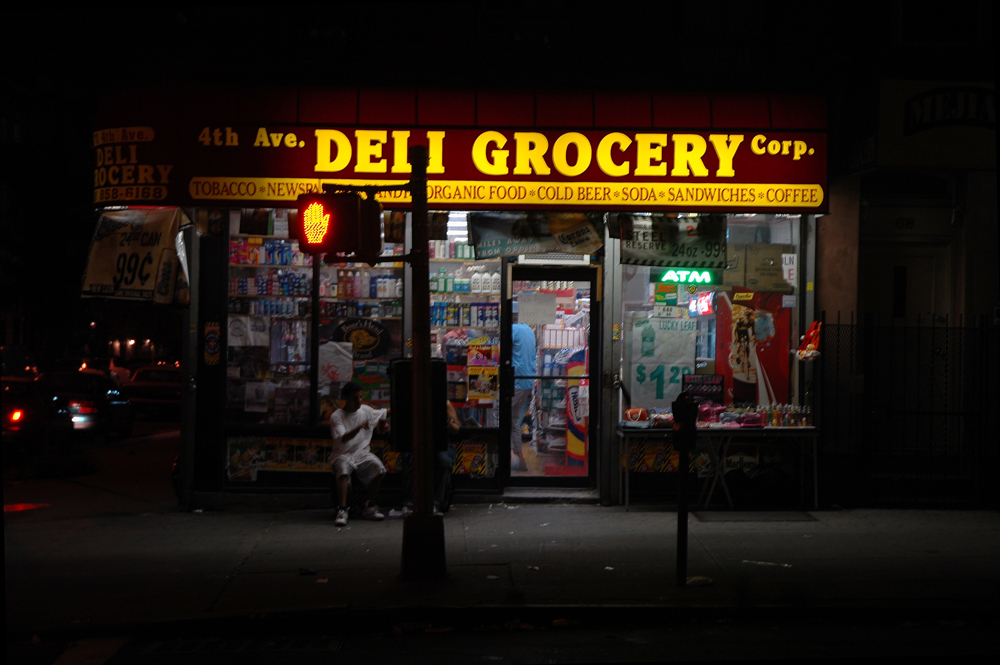
We are celebrating 15 years — and counting — of stories that are deeply researched and deeply felt, that build a historical record of what the city has been.
We are celebrating 15 years — and counting — of stories that are deeply researched and deeply felt, that build a historical record of what the city has been.
Food issues make headlines. Note Michelle Obama’s campaign against childhood obesity, the White House vegetable garden, chef Jamie Oliver’s 2010 Ted Prize for his work to counteract the culture of junk food, and Michael Pollan’s appearances on Oprah and The Daily Show to discuss his motto “Eat food. Not too much. Mostly plants.” But how often do we talk about food systems and the staggering, complex infrastructure that supplies, processes, distributes, stores, and removes the waste of what we eat? Or the way that food, food culture, and food systems shape the urban environment around us?
Nicola Twilley, founder and author of the blog Edible Geography, and Sarah Rich, a former senior editor of Dwell who writes about food, sustainability and design, are doing just that – and they’re starting right here in New York City. This Saturday, February 27, Twilley and Rich are hosting Foodprint NYC, which they describe as “the first in a series of international conversations about food and the city. From a cluster analysis of bodega inventories to the cultural impact of the ice-box, and from food deserts to peak phosphorus,… [this] free afternoon program will include designers, policy-makers, flavor scientists, culinary historians, food retailers, and others, for a wide-ranging discussion of New York’s food systems, past and present, as well as opportunities to transform our edible landscape through technology, architecture, legislation, and education.”
Their timing is perfect. Last week, Manhattan Borough President Scott Stringer released “FoodNYC: A Blueprint for a Sustainable Food System” (click here to download pdf), which aims to create a first-of-its-kind, comprehensive vision for substantive food policy for New York City. Issues tackled include the regional foodshed, the cultivation of New York’s food economy, and improvements to everything from food processing and distribution systems to education to waste reduction. The report’s final chapter calls for the creation of a Department of Food and Markets to manage and lead reform of food policy and programs, because, as is stated in FoodNYC’s introduction: “New Yorkers deserve access to safe, affordable and healthy food, produced in an environmentally, socially, and economically sustainable system.”
Twilley and Rich sat down with Urban Omnibus to talk about the inspiration behind The Foodprint Project, how the design community can get involved with food systems, and how we see cities differently through the lens of food. –V.S.
This weekend you kick off The Foodprint Project with Foodprint NYC. How did the project take shape and how will it evolve, both this weekend and in the future?
I have always been interested in helping to change the way people understand or see something. For me, food is an incredibly powerful tool for connecting seemingly disparate issues. It is a magical lens that allows you to see the landscape in a different way. I was also inspired by the book Hungry City by Carolyn Steel. Her core argument is that food is basically a design tool. If you design for food and food systems, you will inevitably address all considerations needed to create a sustainable, workable community. It was a revelation to me.
Food has always been a personal passion of mine, but it was only in the last couple of years that I started integrating it into my writing and my interest in design. The topic of sustainability was my entry into both worlds actually, and I’m now pursuing ways of looking at food that aren’t just about cooking and eating – though don’t get me wrong, I love cooking and I love eating. The Foodprint Project was shaped by two topics that both Nicky and I find quite compelling: the issues of city zoning and access, and the ways in which food and eating behaviors influence the physical shape of the city.
Foodprint NYC was conceived as the start of a larger, multi-city project, but we don’t necessarily know what shape that will ultimately take. This is a conversation that will be different in every single city that we do it in and is also rich enough to become an exploration that isn’t just about conversations and events. Maybe it will become a research project or a mapping project or a publication – we don’t know. The topic is relevant to anyone who is trying to figure out what will happen in the city of the future, and how we can make it as sustainable, resilient and healthy as it can be.
Speaking of mapping projects, your second panel on Saturday, entitled Culinary Cartography, will ask what can be learned by mapping New York City with food as the metric. I’ll turn that question to you – what do you learn when you look at the city through food?
This panel is key to why we started this project. There are so many ways that people look at food: advertising, gentrification, bodega inventory, where traditions are strongest, where they are weakening. You learn something different each time. It would be a rich topic anywhere, but it’s very rich in New York. Food creates an immediate impression here, on a streetscape level.
You can uncover patterns in the foodscape when you take a step back and think about what you’re looking at – which people don’t necessarily stop to do. You don’t tend to take note of what you see in a particular neighborhood, for example, because of what you are already expecting to see there. By taking that information apart and drawing out a map you can start to ask what it all means.
You can’t paint a pretty picture of distribution centers the way that you can paint a pretty picture of a tomato vine.
And there are plenty of ways that food can be used as a metric. There is a project I’ve written about that maps cupcake shops as indicators of gentrification. In the same piece I also discussed Magic Johnson’s coffee shop project, in which he brings Starbucks to neighborhoods that don’t have them in a deliberate attempt to seed a critical mass of street level commercial activity. Programs like that raise other questions as well. Can you observe patterns in one neighborhood and then seed them in another? It’s obviously not as simple or straightforward as just duplication.
Right – you can’t necessarily just deploy the Union Square Greenmarket in the middle of wherever you are, and expect the same sort of community congregation to take place. It exists in a design context. For large-scale design thinking, you have to imagine what it would look like to reshape the context around which you would build a farmers’ market or any food system entering a neighborhood.
Mapping is a prerequisite for understanding, and understanding patterns is a prerequisite for identifying the questions you want to ask – so if you map where farmers’ markets or community gardens are located, then you can ask why aren’t there some in this neighborhood and why are there some in this neighborhood, and what you learn from that will enable you to make design interventions. Mapping is the prerequisite for all of that.
How and why should architects and designers get involved in food systems?
It partially depends on the architects. Some architects are interested in infrastructure, urban planning, thinking about systems; and some aren’t. Those who are can bring something to the food conversation that is otherwise missing. The most exciting architecture projects are the ones that really investigate problems, collaborate with people from across the spectrum and provide that kind of spatial problem-solving that would really benefit food systems. I do think there are an increasing number of architects who are interested in the topic, but they’re operating without guidelines or a general industry-wide understanding right now.
Having just spent 2½ years as an editor at Dwell, I saw a lot of house projects with roof gardens and vegetable gardens. These are great, of course, both in terms of aesthetics and quality of life, but I sometimes felt like they were gestural features intended to do all the work of making a house appear “green.” I didn’t see many projects that struck me as truly innovative where residential urban agriculture is concerned—nothing that went beyond the typical array of veggies on a patch of roof. Then there are the concepts that have been the candy of green blogs in a way—vertical farming, for instance—which hook people’s attention because they sound cool and futuristic. It’s not that these proposals are all fantasy, but considerations of viability are crucial. When you ask questions about actual viability, implementation, construction and operation, you start to figure out what is realistic and what just sounds cool.
On an urban scale, outside of residential, I am interested in the efforts to get more car-free streets in cities, and how you can then use that real estate. Otherwise, in dense cities, you’re left with rooftops as the main source of available space. I think there are leaps and bounds designers can take to figure out innovative ways to utilize space.
The talk about “farm to table” only deals with the farm and then the table, not necessarily what’s in between.
There is significant media attention paid to food and health issues, but less so to food infrastructure. What is lacking in the general public’s understanding of or involvement with food systems?
There are starting to be more conversations about the infrastructure of food these days, and I certainly know more architects who are thinking about these things than there seemed to be five years ago. But it still is a long way from being a mass media discussion point, probably because it gives you a headache to think about how many things are tied up into food infrastructure! Are we going to talk about zoning, tax incentives, tax rates, development regulations, food safety, transportation, corporate interests, efficiency – it is a huge swirling morass. In contrast, when you have Jamie Oliver talking about health and nutrition, people can understand that on a much more visceral, personal level.
It’s not very sexy to talk about any kind of system. But there has been increased interest and awareness from the general public about distribution and processing as a result of the recent wide-spread food contamination scares. For many people, a curtain was pulled back and they realized how our system works, that if there is contaminated spinach in a giant distribution center in North Dakota, they might still get sick in Los Angeles. People pay attention when something goes wrong, they’re suddenly connected to the problem and are vulnerable. But once that moment passes, most people forget or choose not to think about it as long as they can go to the grocery and buy what they want.
A lot of the talk about “farm to table” only deals with the farm and then the table, not necessarily what’s in between. You can’t paint a pretty picture of distribution centers, wholesale markets and trucking systems the way that you can paint a pretty picture of a tomato vine. Part of what we’re trying to do is show that these topics are fascinating and worth talking about.
Manhattan Borough President Scott Stringer just released the report “FoodNYC: A Blueprint for a Sustainable Food System.” You are dedicating your first panel on Saturday to questions about how zoning, policy and economics shape New York City’s food systems. What are your responses to FoodNYC? Where do you think food policy should be going?
I immediately noticed the report’s attention to local food processing and manufacturing infrastructure, which is too absent in New York right now. Part of that is a scale issue. A lot of manufacturing and processing infrastructure scaled up to become cost efficient and thus was no longer suited to small-scale distributed urban production. People are working to develop more flexible infrastructure, but we’re definitely not there yet. The manufacturing and processing side of the system goes back to zoning issues as well – though it is only one part of the zoning battle. Cities are no longer zoned for food production, just ask New York beekeepers or Pittsburgh’s urban farmers. Selling food also requires specific zoning classifications, which ties in with tax abatements for fast food restaurants, or the New York City FRESH program that incentivizes the inclusion of supermarkets in new developments.
It also raises questions about jobs. Green collar jobs are part of people’s vocabulary now, though mostly in relation to energy infrastructure. A whole parallel array of occupations could result from building food infrastructure.
I’m intrigued to find out how the proposals in FoodNYC affect individuals and organizations in the city. What does this mean to a food cart vendor? What does this mean to a soup kitchen? And what do changes in the food system mean? Where do jobs go? Where does money flow? What are the constraints?
In general, I was impressed by the report’s inclusiveness, looking at the waste stream, education and the regional foodshed, and its engagement of food in an economic development strategy. But one thing that I thought was missing was an overt connection to health policy. Health is referenced, but not as explicitly as I expected – which is funny because, as we’ve discussed, with Michelle Obama and Jamie Oliver putting those issues at the forefront, that’s where people’s minds and eyes are right now.
But there is a significant focus on establishing healthy eating and behavioral habits at an early age in FoodNYC. Yes, with programs like the Active Design Guidelines, which is explicitly connected to health policy, it is smart to use design and planning to encourage healthy behaviors, but it is hard to convince individuals to change their behavior. What kids learn early they keep with them for their whole life.
Education is an important component, even beyond schools. It’s just not self-explanatory to people what to ask and how to find out information about their food. The FDA’s new food labels have to come with a “how to understand and use it” guide. It is a huge problem. Meanwhile, there is an increasing desire for people to have access to data and information about where their food comes from, how far it has traveled. The need to have a conversation about “what you need to know about your food” is such an interesting symptom of our extended and convoluted food system. If you shrink the distance between farm and fork, accessing that information becomes so much easier.
Foodprint NYC took place on Saturday, February 27, from 1-5:30 p.m. at Studio-X, 180 Varick Street, Suite 1610. For more information, including a complete list of panel discussions and participants, visit foodprintproject.com.
The views expressed here are those of the authors only and do not reflect the position of The Architectural League of New York.



Comments